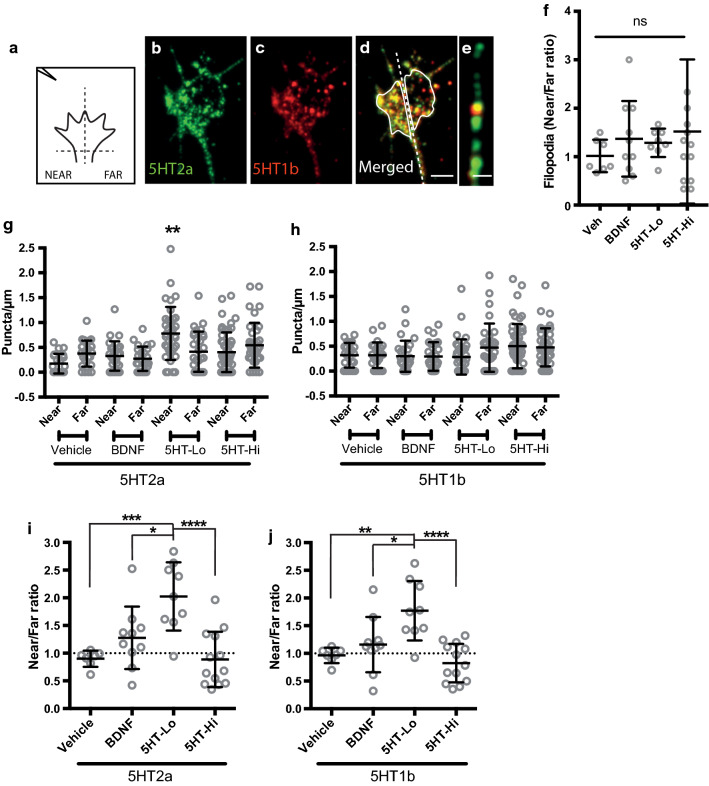Fig. 7.
5HT-Lo exposure causes asymmetric distribution of 5-HT receptors to the turning or motile side of growth cones. Schematic a showing growth cone divided into “near” and “far” regions with respect to micropipet position (located on the upper left side). b–d Growth cones immunostained after turning in response to 5HT-Lo and stained for 5-HT2a (green, b), 5-HT1b (red, c) and merged in (d). Dotted line separates the near and far regions of growth cone (near vs far). (e) Representative image of filopodia with 5-HT2a (green), 5-HT1b (red) receptor puncta. (f) There was no significant near/far bias in the number of filopodia following exposure to 5HT-Lo (n = 8, p = 0.9004), 5HT-Hi (n = 13, p = 0.5450) or BDNF (n = 10, p = 0.7907) compared to vehicle. (Data not normally distributed: Kruskal–Wallis, Dunn’s multiple comparison test). g There were significantly more (n = 36, p = 0.0033) 5-HT2a puncta in filopodia on the near side of growth cones exposed to 5HT-Lo compared to all other treatments. h There was no bias in 5-HT1b puncta in filopodia of growth cones. (Mann–Whitney U-test). (i-j) When entire growth cones were analysed, i 5HT-2a (n = 9, p = 0.0006) and j 5HT-1b (n = 9, p = 0.0028) receptor translocation was significantly biased in growth cones exposed to 5HT-Lo. All ratios were compared to vehicle (Data normally distributed: Shapiro–Wilk. One-way ANOVA, Tukey’s multiple comparison test). Scale bars are 5 μm (Fig. 7b–d) and 1 μm (Fig. 7e)

